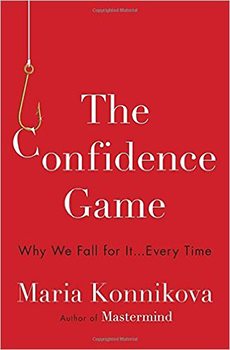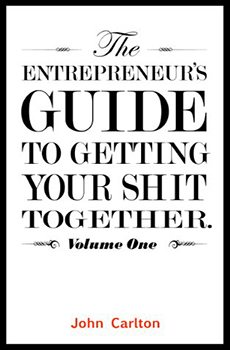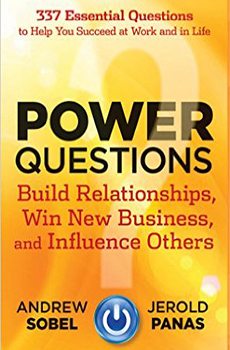Entrepreneurs
3 Little Known Books Every Entrepreneur Should Read

Last year, I caught a lucky break. I was working a dead-end job at a bank and hated every minute of it. Until one day, I sent an email to one of my favorite online marketers on a whim. I pitched him an idea for a new product to build and sell.
He liked the idea so much that he hired me as a contractor, on the spot. I quit my job and it felt amazing. Until I realized one huge problem: I was completely unqualified for the job. I was a data-driven, numbers geek with zero writing or sales experience. Yet, I was hired to do marketing that would be seen by millions.
So over the next 16 months, I asked everyone I knew and respected how to become a world-class marketer, fast. And it worked. I went from an excel whiz to a professional copywriter who’s sold millions of dollars worth of products online.
One of the biggest keys to my success was reading books. But not just any books. It had to be the best. There are a long list that you’ll find almost anywhere for entrepreneurs and marketers but there are three books below that not very many people know about but it can change their life.
Here are three must read books that very few people know about:
1. The Confidence Game: Why We Fall for It. Every Time by Maria Konnikova
 Words have power. And depending on the words you use, you can express:
Words have power. And depending on the words you use, you can express:
- Extreme happiness (“Thank god for this!”)
- Your love for someone (“Will you marry me?”)
- Or your deepest regret (“I want to die.”)
People have gone to war over words (The Declaration of Independence). And people have been inspired to stand against the world for a cause they believe in (“I have a dream” speech). It’s clear that words can inspire, convey life-changing thoughts, and express deep emotion.
But they’re also the exact tools con artists use to thrive. And in the book The Confidence Game: Why We Fall for It . . . Every Time, you get a glimpse into the world of how con men use stories, words, and emotions to rip off the masses.
Note: I do not think marketers should read this book to do any scamming or manipulating of their own. No. The reason marketers must read this goes much deeper. It gets into how to inspire others to take action. Consider this: the only thing that separates a con man from a great salesperson is intent.
For example, Dale Carnegie’s How to Win Friends and Influence People is known as the bible of conmen, but it’s also considered a staple on the shelves of all successful business people. See how it gets tricky?
The book is packed with jaw-dropping stories. But one of my favorites involves Victor Lustig (the man who sold the Eiffel Tower — twice!) and Al Capone (one of the most famous mobsters of all time).
I won’t spoil it by giving away the details. But let’s just say the con man (Lustig) is one of the few people who ever deceived Capone and lived to tell about it. You have to check it out.
“We aren’t robbers, you and I. To rob a fool, you don’t need knives: Just flatter him, tell him sweet lies, And he is yours for life” – Maria Konnikova
2. The Entrepreneur’s Guide to Getting Your Shit Together By John Carlton
 John is a copywriting legend. He pioneered many of the marketing tactics we take granted today. Some say he’s the most ripped-off copywriter alive. In fact, a lot of modern day ads are blatant plagiarism of some of his most successful pieces.
John is a copywriting legend. He pioneered many of the marketing tactics we take granted today. Some say he’s the most ripped-off copywriter alive. In fact, a lot of modern day ads are blatant plagiarism of some of his most successful pieces.
Even still, Carlton doesn’t care. You can steal his words, but you can’t take his swagger and deep understanding of what makes people buy. And that swagger and psychology shines through in his copy. Try reading something he wrote without feeling something well up in your chest and stir you to act.
I’d recommend reading this one with an eye to 2 things:
1. His style. You can soak up his years of marketing knowledge just by giving this one a close read. It’s spunk combined with direct response combined with vivid imagery, and it’s artfully done.
2. How to start your own business. This book is a great guide for getting started as a freelancer, business owner or even an employee who’s going to take control of their career destiny.
Carlton’s been around the block a time or two, He’s gotten a few scars. And rather than make the same mistakes he made, you can get some of those lessons directly from this book. Get it now and get your stuff together.
3. Power Questions: Build Relationships, Win New Business, and Influence Others By Andrew Sobel
 Andrew Sobel is a high-ranking business consultant who regularly gets in front of billion dollar executives. His secret? It’s not fancy tricks or cheap sales tactics. Nope. It’s a simple concept we’ve all been using since we were kids: asking questions.
Andrew Sobel is a high-ranking business consultant who regularly gets in front of billion dollar executives. His secret? It’s not fancy tricks or cheap sales tactics. Nope. It’s a simple concept we’ve all been using since we were kids: asking questions.
Selling is not about cramming your product down the other person’s throat. It’s about catering your solutions to your prospects exact needs. How do you uncover those needs in the first place? Well, Sobel proves that one of the best and only ways to do that is asking good questions.
And the 200+ questions Sobel presents in this book have all been tested at the highest level of sales (where the decision can take up to 6 months) and millions of dollars are at stake. While this book contains tons of answer-eliciting questions, it’s also a masterclass in storytelling.
“Every interaction is an opportunity.Every action has an impact.Every moment is a choice.Are you choosing the impact you want to have?” – Mindy Hall
Have you read any of these books before? Which ones? What did you think? Leave your thought below!
Change Your Mindset
The Silent Skill That Makes People Respect You Instantly
What truly earns respect and why most people go about it the wrong way

Everybody craves respect but not everyone earns it. Some people believe that a title, years of experience, or a position of authority automatically entitles them to respect. (more…)
Entrepreneurs
The Essential Skills Every Entrepreneur Needs In 2026
Success in the digital age isn’t about luck. It’s about mastering the skills that separate dreamers from doers.

When I was 22 years old, I started my first side hustle as a ghostwriter. (more…)
Business
The Hidden Money Pit in Your Operations (and How to Use It)
See how smart asset management software is quietly saving businesses thousands in wasted time, stock, and maintenance.

Trimming unnecessary expenses and minimizing resources is a general practice in running a business effectively. Asset management software can help you achieve those goals. (more…)
Business
Thinking of Buying A Business? These 6 Sectors Quietly Produce the Best Deals
Before you buy your next venture, check out the sectors where successful businesses are changing hands every day.

All entrepreneurs have a desire to be the masters behind a successful venture. Buying an established business is a great choice for many. This provides instant access to an established market with existing infrastructure and clients. (more…)
-

 Did You Know4 weeks ago
Did You Know4 weeks agoThe Success Patterns You Inherited (And Didn’t Notice)
-

 Entrepreneurs4 weeks ago
Entrepreneurs4 weeks agoThe Essential Skills Every Entrepreneur Needs In 2026
-

 Change Your Mindset3 weeks ago
Change Your Mindset3 weeks agoHow to Turn Your Mind Into Your Greatest Asset (Instead of Your Enemy)
-

 Change Your Mindset3 weeks ago
Change Your Mindset3 weeks agoThe Silent Skill That Makes People Respect You Instantly
-

 Life2 weeks ago
Life2 weeks ago10 Research-Backed Steps to Create Real Change This New Year
-

 Tech2 weeks ago
Tech2 weeks agoWhat’s in a Name? How to Get Your Domain Right
-

 Did You Know1 week ago
Did You Know1 week agoHow Skilled Migrants Are Building Successful Careers After Moving Countries

























4 Comments